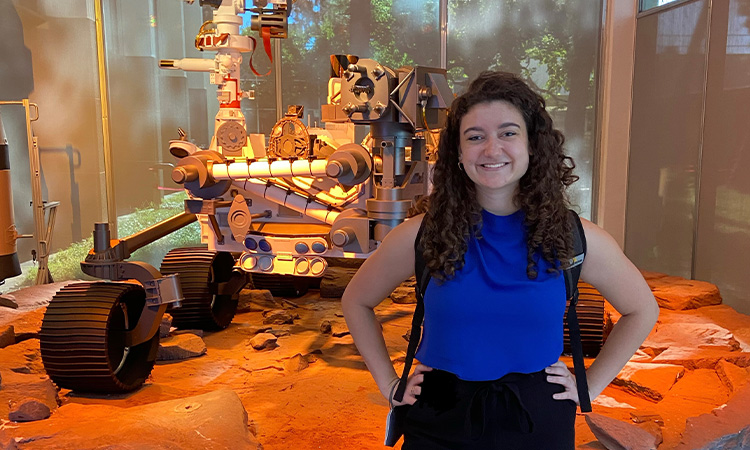Tully Mahr is a Gundungurra woman studying engineering at the University of Melbourne. She recently returned from the United States after her 10-week internship with NASA.
Five First Nations students were the first ever cohort to partner with a scientist or engineer mentor at NASA’s Jet Propulsion Laboratory (JPL) in California.
During Tully’s internship she was part of the origins and habitability laboratory within the planetary science division and had the experience to explore the compositional gradients in hydrothermal chimney systems.
“The internship at NASA's Jet Propulsion Laboratory was, without a doubt, a life-changing experience for me,” Tully says. “In particular, it was the personal development aspect of the internship that left a lasting and life-defining impact on me.” We asked Tully some questions about her experience, what she learned and the unique perspective she is bringing to engineering.
Overall, how was your internship experience?
My mentors at JPL provided guidance not just on the technical aspects of my project, but also on broader professional and life skills. The chance to interact daily with NASA's scientists and engineers was an extraordinary aspect of the internship. Learning from their vast experiences, hearing their stories, and understanding their approaches to solving complex problems provided me with a wealth of knowledge and inspiration.
Overall, it was more than I could have ever anticipated. It was not just about the growth of my technical expertise, but also about the evolution of my perspective, professionally and personally. The combination of rigorous scientific work, invaluable mentorship, and the welcoming community at JPL made my internship a truly unforgettable chapter in my career.
What were some of the things you learnt?
My internship was transformative in guiding my career aspirations. It highlighted the possibility of intertwining science and engineering, an intersection that is increasingly valuable in today’s complex research and development landscapes. Coming from a science background and currently pursuing a master's in mechanical engineering, I have become deeply interested in the niche where these fields overlap. This intersection is rich with potential and necessitates interdisciplinary skills for groundbreaking advancements and innovation.
How will this experience guide your career aspirations?
The experience at JPL highlighted the value of integrating Indigenous knowledge into scientific and engineering domains. Indigenous perspectives and methodologies offer a wealth of insight, particularly in understanding and interacting with our natural world. These knowledge systems provide unique viewpoints and approaches that are often overlooked in mainstream research.
My goal is to be at the forefront of merging these three distinct yet complementary areas: science, engineering and Indigenous knowledge. Once I complete my master's degree, I hope to pursue a PhD that focuses on this intersection. I envision a future where my work not only contributes to the fields of space exploration but also serves as a bridge, bringing together modern scientific techniques, engineering innovations, and the rich, often untapped traditional Indigenous knowledges.

